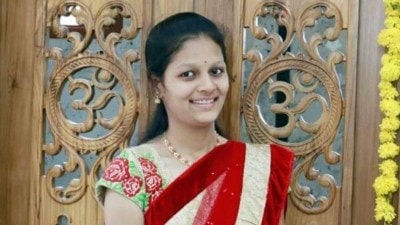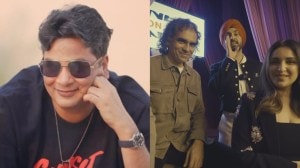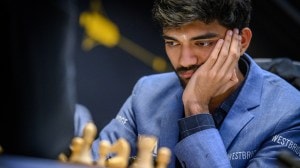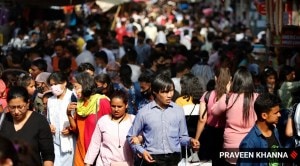- India
- International
2010 Karwal Nagar kidnapping-murder case: After Delhi HC frees accused, victim’s family says god will give justice
The family is unsure about their next course of action as hiring a lawyer is not financially viable. “We have to get our daughter married... The groom's family paid for the engagement ceremony and they are now asking us to pay for the wedding,” said Dharam.
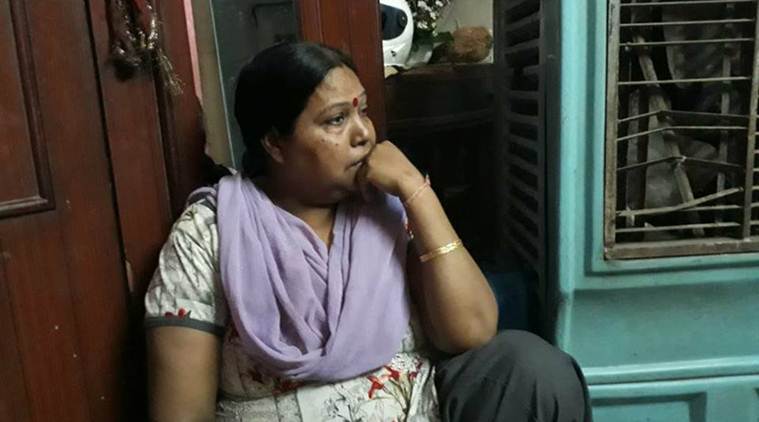 Rani, the mother of the 14-year-old boy who was kidnapped and killed in 2010, says the High Court verdict has reopened old wounds.
Rani, the mother of the 14-year-old boy who was kidnapped and killed in 2010, says the High Court verdict has reopened old wounds.
For Rani and Dharam, the last two weeks of 2010 were harrowing. Their 14-year-old son Vikas was being held by kidnappers who demanded a Rs 15 lakh ransom — an amount they couldn’t afford.
On December 31, their son’s dismembered and charred body was recovered from the BSES transformer room in Delhi’s Karawal Nagar — half an hour from their house in Jhilmil Colony.
Officers probing the case concluded that it was the family’s two neighbours, Manish Sharma and Anil Kumar Sharma, who kidnapped Vikas for ransom money. What followed the recovery of the body was several trips by the family to courtrooms in the hope of getting justice. In the meantime, in 2012, Rani gave birth to a son whom the couple named Vikas. And, when in February 2017, a trial court pronounced the two accused guilty, sentencing them to 25 years in prison, Vikas’s parents got a sense of closure.
For the past years, the couple and their two daughters — one was married in 2010 and the other about to get married — were oblivious to the fact that both the accused had approached the Delhi High Court and appealed against their conviction. On April 18 this year, the court set aside the 2017 verdict and said there was no “conclusive evidence” to link the two neighbours with the crime.
The judgment, the shocked family said, has reopened old wounds. “Ye kaise ho sakta hai? Usko maara toh gaya tha, apne aap toh nahi mara woh (How is this possible? He was murdered. He did not kill himself),” said Rani, now 49, sitting in her one-room house. Dharam, now 61, has suffered paralytic attacks twice and has stopped working. Their 23-year-old daughter, working as a receptionist at a gym, is the only earning member.

“Agar aaj Vikas zinda hota toh hamara sahara banta. We’ve been living to see the culprits get punishment. But if even they are set free, what will we do,” said Dharam.
In its judgment, the trial court had held that the accused were known to the teenager and ransom calls were made from a mobile phone of one of the accused. As per trial court records, the accused strangled and smothered the boy. They then took him to a BSES transformer room, poured petrol and transformer oil on him and burnt the body before burying the remains. Court records also state that the ransom calls were made by the accused post the murder.
The trial court said there was no ocular evidence and the case could only be proved through scientific and circumstantial evidence. Therefore, the case hinged on linking of the ransom calls to them. It said the accused were zeroed in on through the phone’s ‘IMEI’ number.
“Electronic evidence proves beyond reasonable doubt that the SIM from which ransom calls were made was from the accused,” Additional Sessions Judge Sanjeev Kumar Malhotra had said.
The Delhi High Court, however, took a divergent stand. A bench of Justices S Muralidhar and I S Mehta emphasised on “the loopholes”, saying the trial court did not “notice” important aspects of the case.
“Merely demonstrating that the SIM card of the number (of one of the accused) was used on a mobile (IMEI ending 90) did not reveal that the said phone was used to make ransom calls. The important aspect of linking A2 (one of the accused) was overlooked by the trial court,” the HC said.
The accused, in their defence, also said they have been “falsely implicated” by police “just to solve a blind case”. The defence counsel had also argued that the SIM card was not in the name of the accused and that the investigation officer did not question the actual owner.
Trying to come to terms with the High Court verdict, Rani opened her cupboard and spread out Vikas’s clothes on the bed. “Size dekho. Mera baccha bahut strong tha. Usne resist kiya hoga unko (See the size of his clothes. He was a strong boy… I know he would have resisted his kidnappers),” she said as she broke down.
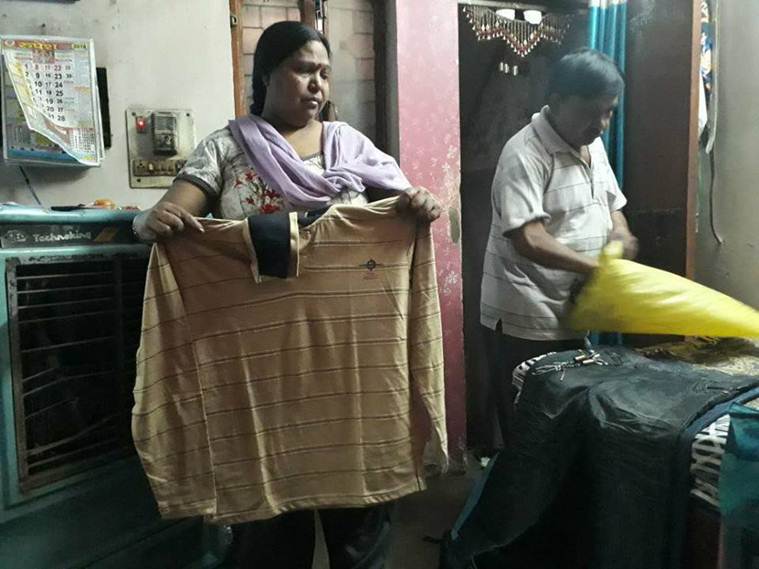 Rani opened her cupboard and spread out Vikas’s clothes on the bed. “Size dekho. Mera baccha bahut strong tha. Usne resist kiya hoga unko.”
Rani opened her cupboard and spread out Vikas’s clothes on the bed. “Size dekho. Mera baccha bahut strong tha. Usne resist kiya hoga unko.”
Recounting the day he went missing, Rani said, “Ball lene gaya tha wo park mein aur phir aaya hi nahi. Ek baar usko gale bhi nahi laga saki. (He had gone to get his ball from the park but never came back. I could not even hug him one last time…”
Her younger son Vikas, now six, consoled his mother while looking at his brother’s photo and newspaper clips of the murder.
The family is unsure about their next course of action as hiring a lawyer is not financially viable. “We have to get our daughter married… The groom’s family paid for the engagement ceremony and they are now asking us to pay for the wedding,” said Dharam.
“Ab bhagwan dega nyay (Now God will give justice),” he said.
Anil Sharma (49) said he spent 7 years and four months in jail before he was acquitted by the High Court. “All I know is that the police detained me on January 1, 2011 and at 4 pm they took us to police headquarters and people from media shot a few pictures of us. There we came to know that we have been arrested for kidnapping. The IO of the case had told us ‘agar kuch nahi kiye hoge to nikal jaaoge’ (If you did not do anything, we will be out).”
He alleged the police falsely showed that a SIM card was recovered from his possession. “The police showed a recovery of the phone from my co-accused and the SIM card from me. This SIM card was in someone else’s name whom the police never questioned.” Even the recovery of the body from the transformer room is a mystery because it was manned all the time, he claimed. “All these were conveyed to my lawyer during the trial, but he did not appear during the final days of the hearing…I was not financially strong and remained in jail.”
He also said he knew that the father of the deceased was a junk dealer and, therefore, not financially strong. “Ek kabadiwale ke bacche ko kidnap karke kya karoonga…karna hota to koi crorepati insaan chunta (why would I choose a junk dealer’s son, If at all I had to do I would have chosen a rich millionaire.” He claims he met the co-accused only in jail and asked him if he was involved in the crime. “Even he answered in the negative,” Sharma says.
He refrained from answering whether police was under any pressure but added, “Vikas’s family members and relatives continued their protests at several places till the time the child remained untraceable.”
Sharma said that fighting this case in the court broke him. “I had to sell a piece of land. I am looking for a job now. ” His 15-year-old son studies in class 10 and his 12-year-old daughter studies in class 7. “I missed a crucial part of my children’s lives,” he says.
Delhi High Court Legal Services Committee appointed lawyer Sumer Sethi, who represented Sharma, said, “The motive behind the alleged murder was not ascertained. According to the prosecution, the child was killed on December 15, 2010, i.e on the first day, even before the first ransom call was made. It is not consistent with the fact that the accused desperately needed money and kidnapped the child and killed him the very first day. ”
Other observations by the High Court
# The SIM used to make the ransom call was not allotted to the accused. It was in the name of some other person, who was not even questioned by police. Even the person who allegedly sold the SIM card to one of the accused turned hostile.
# The trial court took into account phone recordings of ransom calls, which matched one of the accused, as per the FSL report. But the HC said the IO claimed that he set up a “parallel line” to the deceased father’s mobile number, and recorded the ransom caller’s voice on his mobile. “How this could be technologically possible is not sought to be explained.” The HC added that there were no other recordings in the memory card. “The above evidence does not lend any assurance,” the HC said.
# The court also noted that the recovery of the boy’s half-burnt body from the BSES sub-station is “shrouded in mystery”. The High Court then said that the trial court appears to have been carried away by the purported disclosures of the accused while in police custody, which were “not admissible in evidence”. It has proceeded to surmise that the child “must have offered stiff resistance” and, therefore, was smothered with a pillow. “There was no recovery of any blanket or pillow from any of the accused. There is nothing to show the child was strangulated by any of the accused. Interestingly, even the post-mortem report does not conclusively prove the death was due to strangulation,” the High Court said.
Must Read
Apr 19: Latest News
- 01
- 02
- 03
- 04
- 05











